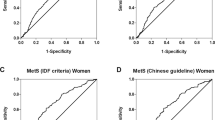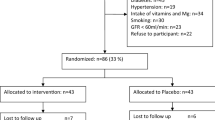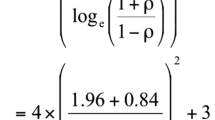Abstract
Background:
Studies on the determination of carnitine levels and nutritional status in patients of type II diabetes.
Objective:
We designed this study to determine changes of serum-free L-carnitine in type II diabetic women.
Design:
A cross-sectional study (case–control study).
Setting:
Clinical of Endocrinology and Metabolism, Sina Hospital, Pharmacological Research Center, Tabriz Medical university, Iran.
Patients and methods:
Taking into account the importance of the control of diabetes, in the present case-control study, the levels of serum-free L-carnitine, blood glucose and lipids, systolic and diastolic blood pressure, body mass index (BMI) and nutritional status assessed in the case and control groups which were selected by the simple sampling method. The control group (n=18) included patients with no complications and the case group (n=33) was grouped into three subgroups including patients with retinopathy, hyperlipidemia and neuropathy.
Results:
Study results indicated that the mean serum-free L-carnitine concentration in the case group was significantly lower than its mean concentration level in the control group, 39.63±8.99 vs 53.42±0.93 μmol/l, respectively (P<0.001). Serum-free L-carnitine in retinopathy, hyperlipidemia and neuropathy case subgroups were 39.03±9.89, 39.63±8.99 and 40.44±12.50 μmol/l, respectively (P>0.05). No significant difference was found between the serum-free carnitine levels of the case subgroups. The mean blood glucose, triglycerides, total cholesterol, low-density lipoprotein cholesterol, very low-density lipoprotein cholesterol levels and systolic and diastolic blood pressure were significantly higher in the case group than in the control group.
Conclusion:
In this study, the mean serum-free L-carnitine levels in diabetic patients with complications was almost 25% lower than in diabetic patients with no complications. On the basis of the study results, carnitine supplementation in diabetic patients, especially in patients with diabetes complications, might be useful.
This is a preview of subscription content, access via your institution
Access options
Subscribe to this journal
Receive 12 print issues and online access
$259.00 per year
only $21.58 per issue
Buy this article
- Purchase on Springer Link
- Instant access to full article PDF
Prices may be subject to local taxes which are calculated during checkout
Similar content being viewed by others
References
Akisu M, Kultursay N, Coker I, Huseyinov A (2002). Myocardial and hepatic free carntine concentrations in pups of diabetic female rats. Ann Nutr Metab 46, 45–48.
American Diabetes Association (2003). Management of dyslipidemia in adults with diabetes. Diabetes Care 26, S83–S86.
Aoshima S, Fujisawa S, Kobayayashi A (1993). Changes in the subcellular distribution of free carnitine and its acyl derivatives in diabetic rat hearts following treatment with L-carnitine. Jpn Heart J 34, 763–772.
Arrigoni-Martelli E, Caso V (2001). Carnitine protects mitochondria and removes toxic acyls from xenobiotics. Drugs Exp Clin Res 27, 27–49.
Brooks SD, Bahl JJ, Bressler R (1985). Carnitine in thestreptozotocin – diabetic rat. J Nutr 115, 1267–1273.
Cattolica CS, Gemelli LA (2004). Carnitine in type 2 diabetes. Ann NY Acad Sci 1033, 99–107.
Cederblad G (1987). Effects of diet on plasma carnitine levels and urinary carnitine excretion in humans. Am J Clin Nutr 45, 720–729.
Cederblad G, Hermansson G, Ludvigsson J (1982). Plasma and urine carnitine in children with diabetes mellitus. Clin Chim Acta 125, 207–217.
De Grandis D, Minardi C (2002). Acetyl-L-carnitine (levacecarnine) in the treatment of diabetic neuropathy. A long-term, randomised, double-blind, placebo-controlled study. Drugs RD 3, 223–231.
Depalo E, Gatti R, Sicolo N, Padovan D, Vetor R, federspil G (1981). Plasma and urine free L-carnitine in human diabetes mellitus. Acta Diabetol Lat 18, 91–95.
Donath MY, Ehses JA, Maedler K, Schumann DM, Ellingsgaard H, Eppler E et al. (2005). Mechanisms of β-Cell Death in Type 2 Diabetes. Diabetes 54, S108–S113.
Gerwald J, Yu-Shan H, Liang T (2005). Crystal structure of mouse carnitine octanoyltransferase and molecular determinants of substrate selectivity. J Biol Chem 280, 744–783.
Hoppel CL, Genuth SM (1982). urinary excretion of acetyl carnitine during human diabetic and fasting ketosis. AM J Physiol 243, E168–E172.
Inokuchi T, Imamura K, Nomura K, Nomoto K, Isogai S (1995). Changes in carnitine metabolism with ketone body production in obese glucose -intolerant patients. Diab Res Clin Prac 30, 1–7.
Irat AM, Aktan F, Ozansoy G (2003). Effects of L-carnitine treatment on oxidant/antioxidant state and vascular reactivity of streptozotocin-diabetic rat aorta. J Pharm Pharmacol 55, 1389–1395.
Keller VA, Toporoff B, Raziano RM, Pigott JD, Mills NL (1998). Carnitine supplementation improves myocardial function in hearts from ischemic diabetic and euglycemic rats. Ann Thorac Surg 66, 1600–1603.
Morabito E, Serafini S, Corsico N, Martelli AE (1993). Acetyl-L-carnitine effect on nerve conduction velocity in streptozotocin – diabetic rats. Drug Res 43, 343–346.
Okuda Y, Kawi K, Murayama Y, Yamashita K (1987). Postprandial changes in plasma ketone body and carnitine levels in normal and non-insulin –dependent diabetic subjects. Endocrinol Japan 34, 15–22.
Pregnant P, Kaiser E, Schernthaner G (1993). Noeffect of insulin treatment or glycemic improvement on plasma carnitine levels in type 2 diabetic patients. Clin Invest 71, 610–612.
Seim H, Eichler K, Kleber H (2001). L(-)-Carnitine and its precursor, gamma-butyrobetaine. In: Kramer K, Hoppe P, Packer L (eds) Nutraceuticals in Health and Disease Prevention. New York: Marcel Dekker, Inc. pp 217–256.
Shankar SS, Mirzamohammadi B, Walsh JP, Steinberg HO (2004). L-carnitine may attenuate free fatty acid-induced endothelial dysfunction. Ann NY Acad Sci 1033, 189–197.
Stearns SB (1983). Carnitine content of skeletal and cardiac muscle from genitically diabetic and control mice. Biochem Med 29, 57–63.
Steiber A, Kerner J, Hoppel CL (2004). Carnitine: a nutritional, biosynthetic, and functional perspective. Mol Aspects Med 25, 455–473.
Tamamogullart N, Silig Y, Icagasioglu S, Atalay A (1999). Carnitine deficiency in diabetes mellitus complications. J Diab Camp (5/6), 251–253.
Vary TC, Neely JR (1982). A mechanism for reduced myocardial carnitine content in diabetic animals. Am J Physiol 243, H154–H158.
Weiland OH (1985). Enzymatic uv test for the determination of L-carnitine. In: Bergmeyer HU (ed) 3rd edn, vol VIII, Methods of enzymatic analysis. VCH Verlagsgesellschaft, Weinheim, Deerfield Beach. pp 481–488.
Williamson JR, Arrigoni ME, Martelli E (1992). The roles of glucosoinduced metabolic hypoxia and imbalances in carnitine metabolism in mediating diabetes – induced vascular dysfunction. Int J Clin Pharmacol Res 12, 247–252.
Winter CS, Simon M, Zorn ME (1987). Relative carnitine insufficiency in children with type I diabetes mellitus. AJDC 143, 1337–1339.
Zhou YP, Berggren PO, Grill V (1996). A fatty acid- induced decrease in pyruvate dehydrogenase activity is an important determinant of β- cell dysfunction in the obese diabetic db/db mouse. Diabetes 45, 580–586.
Author information
Authors and Affiliations
Corresponding author
Rights and permissions
About this article
Cite this article
Poorabbas, A., Fallah, F., Bagdadchi, J. et al. Determination of free L-carnitine levels in type II diabetic women with and without complications. Eur J Clin Nutr 61, 892–895 (2007). https://doi.org/10.1038/sj.ejcn.1602594
Received:
Revised:
Accepted:
Published:
Issue Date:
DOI: https://doi.org/10.1038/sj.ejcn.1602594
Keywords
This article is cited by
-
Triangulating evidence from longitudinal and Mendelian randomization studies of metabolomic biomarkers for type 2 diabetes
Scientific Reports (2021)
-
Effects of l-carnitine supplementation on blood pressure: a systematic review and meta-analysis of randomized controlled trials
Journal of Human Hypertension (2019)
-
Role of carnitine and its derivatives in the development and management of type 2 diabetes
Nutrition & Diabetes (2018)
-
Carnitine supplementation to obese Zucker rats prevents obesity-induced type I to type II muscle fiber transition and favors an oxidative phenotype of skeletal muscle
Nutrition & Metabolism (2013)
-
Role of carnitine in the regulation of glucose homeostasis and insulin sensitivity: evidence from in vivo and in vitro studies with carnitine supplementation and carnitine deficiency
European Journal of Nutrition (2012)



